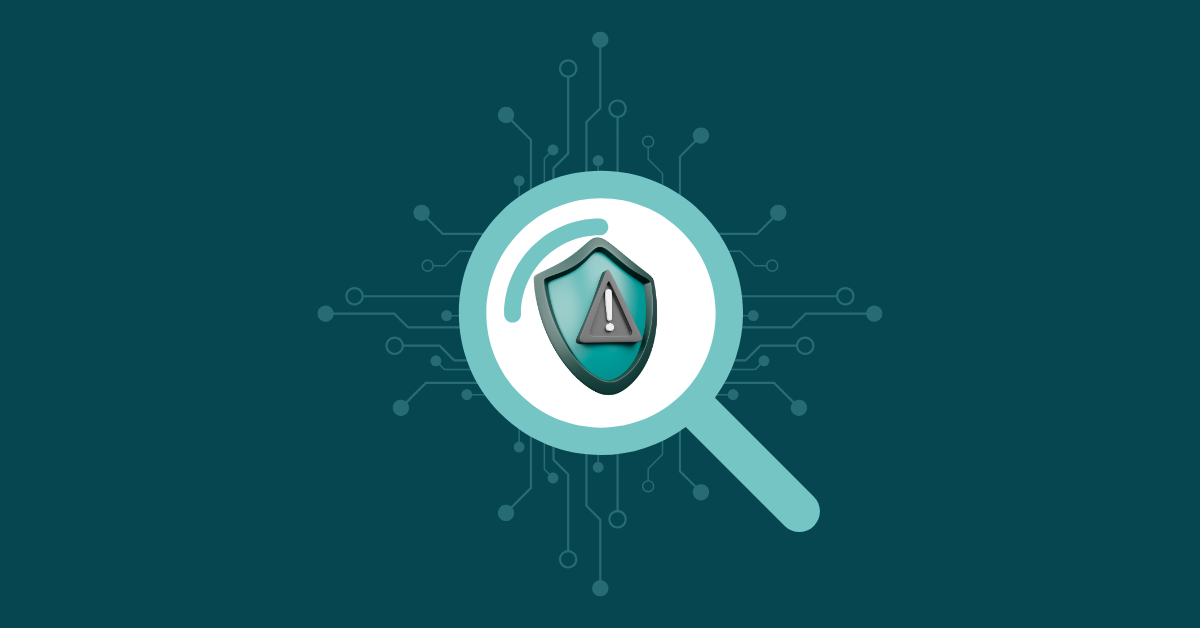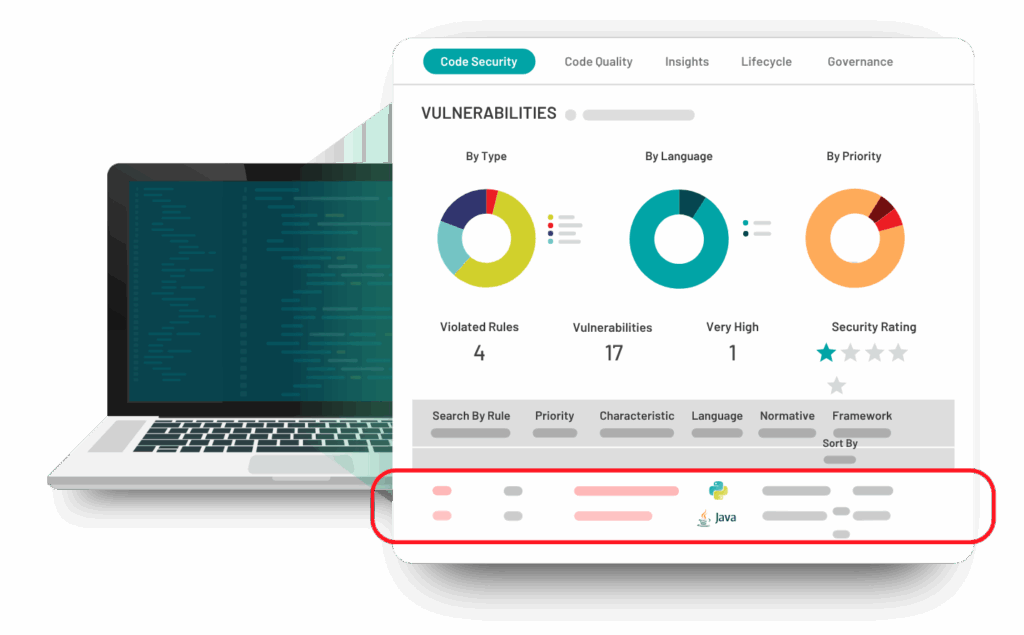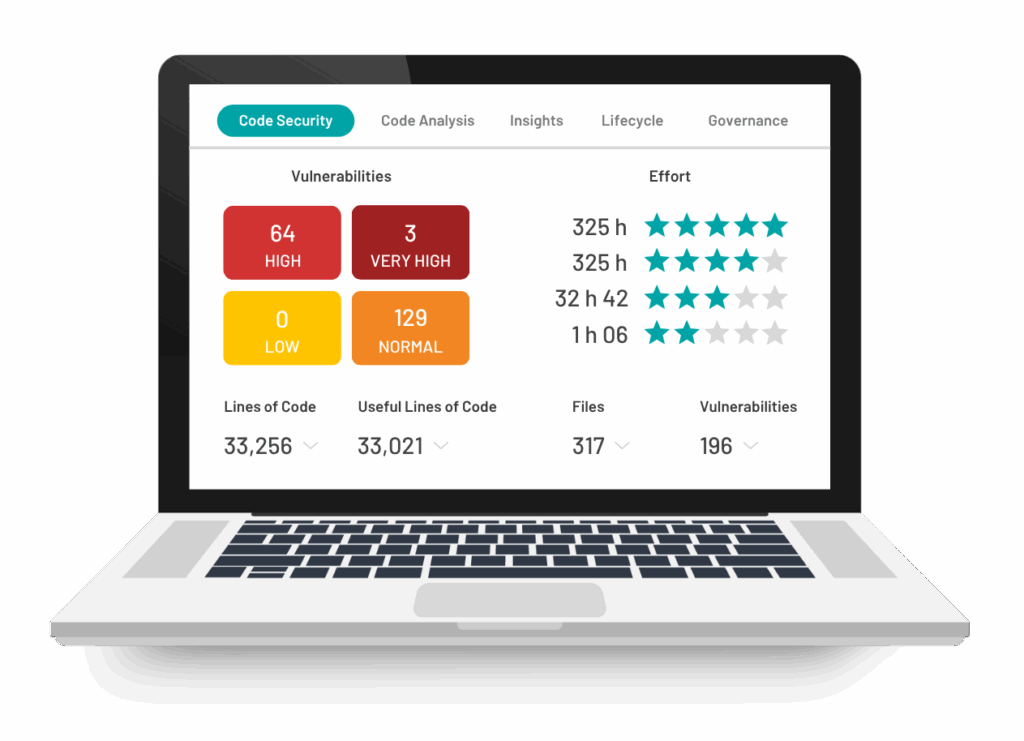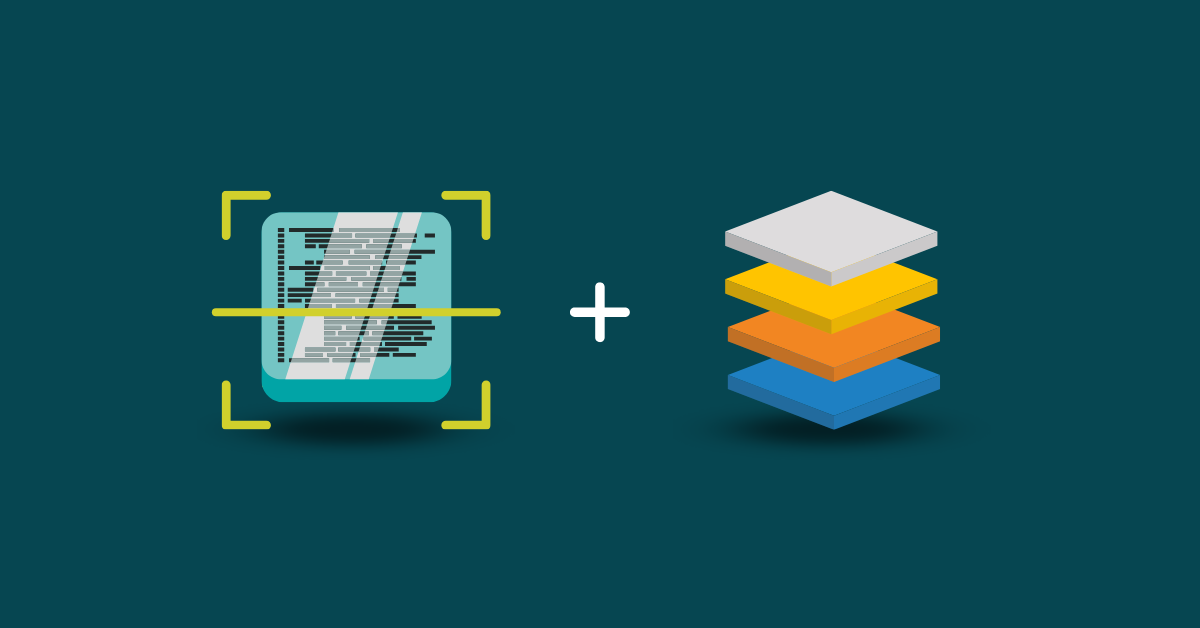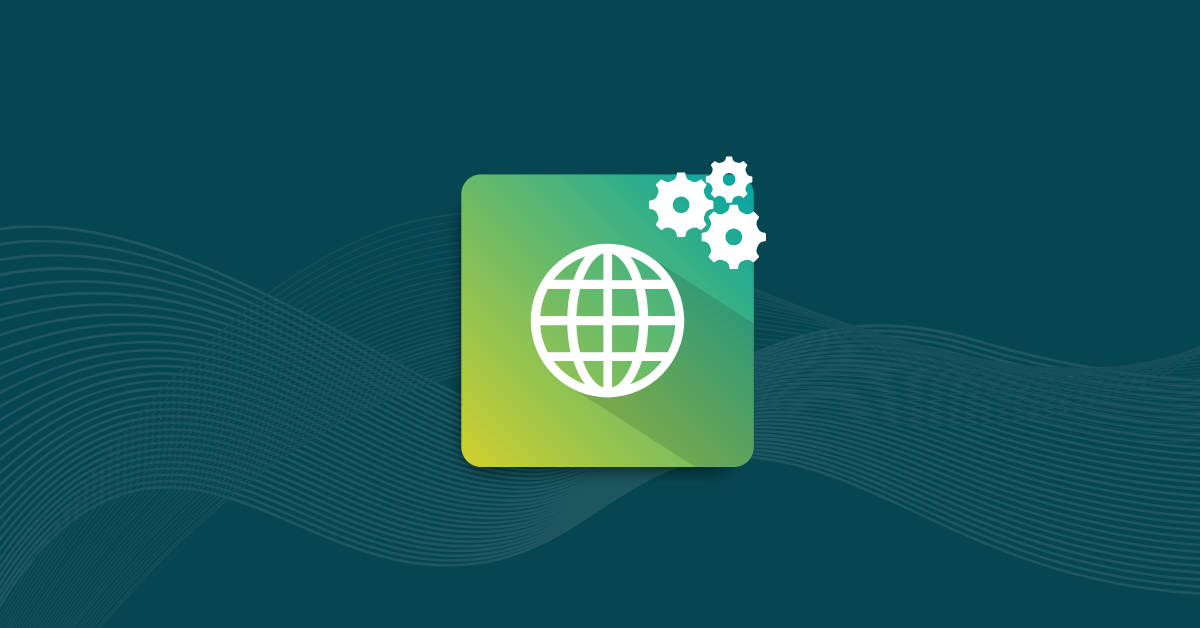As teams adopt shift-left security and DevSecOps, Static Application Security Testing (SAST) tools help developers identify and fix vulnerabilities early, reducing the chance of insecure code reaching production. Adding static code analysis early in the development process cuts down on expensive fixes, supports compliance efforts, and allows teams to deliver secure software more confidently.
Below, we’ve gathered nine of the leading SAST tools worth considering. Each includes details on supported languages and frameworks, scan capabilities, integrations, remediation features, usability, and scalability. Whether you are securing a small application or a complex enterprise codebase, this guide will help you find the best fit for your technology stack, workflows, and security objectives.
1. Kiuwan
Kiuwan offers a developer-friendly SAST solution, Code Security, used globally to produce secure, high-quality code without slowing development. With broad language support, one-click IDE integration, and detailed dashboards, Kiuwan assists developers in quickly identifying and addressing vulnerabilities.
Key features:
- Languages and frameworks: Supports 30+ languages, including Java, Python, COBOL, C#, PHP, JavaScript, mobile, legacy, and more.
- Scan speed and accuracy: Choose between fast incremental or full scans that deliver prioritized, actionable results. Automated scans can run at various points in the SDLC to maintain security without interrupting development.
- Integrations: Works smoothly with popular development environments like Jenkins, GitLab, and Visual Studio, so teams can run automatic vulnerability scans right inside their CI/CD pipelines.
- Developer usability: Provides real-time feedback within preferred IDEs to help developers detect and fix issues as they code, along with clear dashboards offering actionable insights at both project and organizational levels.
- Remediation guidance: Provides detailed, prioritized recommendations mapped to security standards so teams know exactly what to fix and why.
- Flexible deployment: Available as both cloud and on-premises deployments, giving teams flexibility based on their security needs and infrastructure.
Good for:
- Teams that need to meet strict compliance standards like OWASP, PCI DSS, and CWE/SANS, while embedding security checks naturally into development.
Customer reviews:
2. Checkmarx
Checkmarx is an enterprise-grade SAST solution trusted by organizations that need broad language support and easy integration with existing workflows. It boasts scan speeds up to 90% faster than many competitors, helping teams maintain security without delaying delivery.
Key features:
- Languages and frameworks: Supports over 35 languages and 80 frameworks, including Java, Python, C#, JavaScript, Swift, and legacy technologies like COBOL and VB6.
- Scan speed and accuracy: Scans source code directly, enabling early and frequent testing. Incremental scanning allows continuous security feedback throughout the development cycle.
- Integrations: Seamlessly connects with major IDEs (Visual Studio, Eclipse, IntelliJ), CI/CD tools (Jenkins, GitLab, Azure DevOps), and source code repositories (BitBucket, Git, Perforce).
- Developer usability: Features an AI-powered Query Builder for creating or customizing queries tailored to the codebase and policies.
- Remediation guidance: Uses a Data Flow Graph to identify root causes and pinpoint where to fix related issues simultaneously. The AI Security Champion can suggest auto-remediation code to speed secure development.
- Scalability: Supports complex compliance needs and offers both cloud and on-premises deployment.
Good for:
- Organizations that require a comprehensive, scalable SAST solution supporting a wide range of languages and frameworks.
Customer reviews:
- G2: 4.2/5
- Capterra: 3.9/5
3. Veracode
Veracode is a trusted cloud-based SAST solution that helps development and security teams integrate security into pipelines without slowing down delivery. Its SaaS model removes the burden of maintenance and offers scalable, rapid scanning.
Key features:
- Languages and frameworks: Supports a broad range of modern and legacy languages, including Java, .NET, C/C++, JavaScript, and more.
- Scan speed and Accuracy: Combines cloud-based scanning with real-time IDE alerts, allowing developers to catch and fix security issues early, reducing flaws significantly.
- Integrations: Works with IDEs like Eclipse, Visual Studio, JetBrains, ticketing tools such as Jira and Asana, and CI/CD pipelines like Jenkins, GitHub, and Bamboo.
- Developer usability: Intuitive UI and IDE plugins enable quick scans and fast results within existing workflows.
- Remediation guidance: AI-powered remediation offers fixes within minutes, while automated root cause analysis highlights critical issues. Policy enforcement and compliance automation help maintain security standards.
- Scalability: Fully cloud-based, ideal for teams of any size and complex pipelines.
Good for:
- Teams that want to cover more ground by combining static and dynamic testing (DAST), ensuring vulnerabilities are found both before deployment and in live environments.
Customer reviews:
- G2: 3.7/5
- Capterra: 4.0/5
4. OpenText Fortify
OpenText Fortify is a longstanding leader in static code analysis, trusted by industries with strict regulations like finance and healthcare. It delivers precise, deep scans that meet rigorous security and compliance requirements.
Key features:
- Languages and frameworks: Supports 33+ major languages and their frameworks, with frequent updates backed by Fortify’s industry-leading Software Security Research (SSR) team.
- Scan speed and accuracy: Detects more than 1,600 vulnerability types across a million-plus APIs, aligning with OWASP 1.2b benchmarks. Helps accelerate delivery by finding issues early.
- Integrations: Compatible with major IDEs, CI/CD tools such as Jenkins, Bamboo, and Azure DevOps, and issue trackers like Bugzilla and Jira.
- Developer usability: Fortify’s ScanCentral lets developers customize scan depth and speed. It also analyzes RESTful and Swagger-documented APIs for modern app security.
- Remediation guidance: The Security Assistant runs structural and configuration checks designed for speed and accuracy while providing high-confidence feedback directly inside the IDE.
- Scalability: Offers flexible deployment options: on-premises, cloud, or AppSec-as-a-service.
Good for:
- Organizations in regulated sectors requiring deep scans, legacy support, and centralized governance for distributed teams.
Customer reviews:
- G2: 4.5/5
- Capterra: 3.9/5
5. SonarQube
SonarQube combines static code security testing with quality analysis, helping teams maintain secure and maintainable code. It fits easily into developer workflows with quick feedback that catches bugs and vulnerabilities before merging.
Key features:
- Languages and frameworks: Supports over 30 languages, including first-party, third-party, and AI-generated code.
- Scan speed and accuracy: Performs high-speed scans across multiple files and libraries, identifying issues like SQL injection, XSS, buffer overflows, and secret leaks with over 6,000 rules.
- Integrations: Works with GitHub Actions, GitLab CI/CD, Azure Pipelines, Bitbucket Pipelines, and Jenkins.
- Developer usability: Uses multi-threading and language-specific processing to deliver fast, actionable results, helping developers stay productive by minimizing cognitive load.
- Remediation guidance: The AI CodeFix provides one-click, AI-powered remediation suggestions to quickly fix vulnerabilities flagged by SonarQube’s precise static analysis.
- Scalability: Flexible deployment options include running on-premises, cloud, server, Docker, or Kubernetes to fit your infrastructure and team needs.
Good for:
- Teams that want to address security and code quality together with a developer-friendly experience, integrated into continuous workflows.
Customer reviews:
- G2: 4.4/5
- Capterra: 4.5/5
6. HCL AppScan
HCL AppScan is a SAST tool that integrates security into every stage of development. Its AI-driven detection filters false positives and provides visibility across applications, APIs, containers, and infrastructure.
Key features:
- Languages and frameworks: Supports 30+ programming languages, including Java, .NET, JavaScript, Python, covering modern and legacy environments.
- Scan speed and accuracy: Their AI-powered Intelligent Finding Analytics reduces false positives by up to 98%.
- Integrations: Works with popular IDEs, CI/CD pipelines (including Jenkins, Azure DevOps), and defect tracking systems to fit into existing DevOps workflows.
- Developer usability: Delivers real-time feedback, automated fixes, and training within developer workflows.
- Remediation guidance: AppScan’s CodeSweep auto-fixes vulnerabilities directly in the IDE and guides developers through resolution with support from their continuously updated Security Knowledgebase.
- Scalability: Suitable for small teams with the free CodeSweep tool to large enterprises needing cloud or on-premises options.
Good for:
- Enterprises that need comprehensive security coverage all in one place, including static, dynamic, interactive, and open-source application security testing.
Customer reviews:
7. Semgrep
Semgrep is a lightweight, open-source static analysis tool that offers precise control through customizable rules. Its developer-focused design appeals to teams wanting targeted, efficient security checks without heavyweight tools.
Key features:
- Languages and frameworks: Strong support for modern web-centric languages like JavaScript, Python, Go, Ruby, and more.
- Scan speed and accuracy: Extremely fast scans with customizable rulesets, enabling developers to tailor security and compliance checks to their codebase.
- Integrations: Operates as a lightweight CLI that integrates with pull requests, CI/CD pipelines, and issue trackers like Jira, letting developers manage security without leaving their workflows.
- Developer usability: Combines a user-friendly interface with clear context and explanations. Its intuitive, code-like rule syntax makes writing and managing custom rules straightforward.
- Remediation guidance: Semgrep Assistant uses GPT-4 and Semgrep-specific prompts to spot false positives and suggest autofixes for real vulnerabilities, with additional checks to minimize errors.
- Scalability: Best suited for small to mid-sized teams and DevSecOps groups wanting customizable, lightweight scanning. Less ideal for large enterprises with extensive governance needs.
Good for:
- Organizations seeking a user-friendly yet highly customizable tool that empowers them to define and enforce their own security standards.
Customer reviews:
8. GitLab
GitLab provides built-in static application security testing as part of its DevSecOps platform, making it ideal for teams already using GitLab to develop and secure code within a unified workflow.
Key features:
- Languages and frameworks: Out-of-the-box support for major languages like Java, JavaScript, TypeScript, Python, Ruby, C#, Go, and PHP.
- Scan speed and accuracy: Real-time SAST scans in the IDE help developers write secure code as they work. Incremental scanning checks only modified code, so teams catch issues fast without waiting on full scans.
- Integrations: Deep integration with GitHub Actions and GitLab CI/CD.
- Developer usability: Enables developers to catch vulnerabilities early since results appear in merge requests with detailed context and remediation suggestions with no additional tools needed.
- Remediation guidance: Advanced SAST provides detailed threat context and data flows to help developers address vulnerabilities faster. GitLab Duo Enterprise AI speeds up resolution, and integrated security training supports AppSec teams as they grow.
- Scalability: Fits teams of all sizes, from small groups to large enterprises. Template-based SAST scales across projects, with flexible policy management and compliance visibility to meet security and regulatory requirements before code merges.
Good for:
- Teams already using GitLab CI/CD who want to embed security testing into their merge request workflow without adding another product or vendor.
Customer reviews:
Capterra: 4.6/5
9. Snyk Code
Snyk Code extends the Snyk platform’s security capabilities to static code analysis, complementing open source, container, and infrastructure security.
Key features:
- Languages and frameworks: Supports popular modern programming languages including Ruby, Java, Python, Go, and others common in cloud-native development.
- Scan speed and accuracy: Detects and fixes code issues up to 50x faster with pre-validated fixes right inside the IDE and pull request workflows.
- Integrations: Extensive IDE and CI/CD tool support, plus integration with leading large language model libraries such as OpenAI and Hugging Face.
- Developer usability: Offers real-time pull request checks, a dev-focused user interface, and contextual issue descriptions to help developers remediate vulnerabilities quickly.
- Remediation guidance: Automated fixes and expert recommendations powered by AI and machine learning are continually refined with human oversight.
- Scalability: Designed to support organizations of all sizes as they grow cloud-native pipelines.
Good for:
- Teams already using Snyk or looking for a platform that combines static code analysis with open source and container security.
Customer reviews:
- G2: 4.5/5
- Capterra: 4.6/5
Which SAST Tool Is Right for You?
A smart SAST tool strengthens your entire development workflow. With early vulnerability detection, seamless CI/CD integration, and actionable remediation guidance, you’ll deliver secure software without slowing down.
Ready to reduce technical debt, meet compliance standards, and secure every release?
Request your free trial today and shift security left without shifting deadlines.
